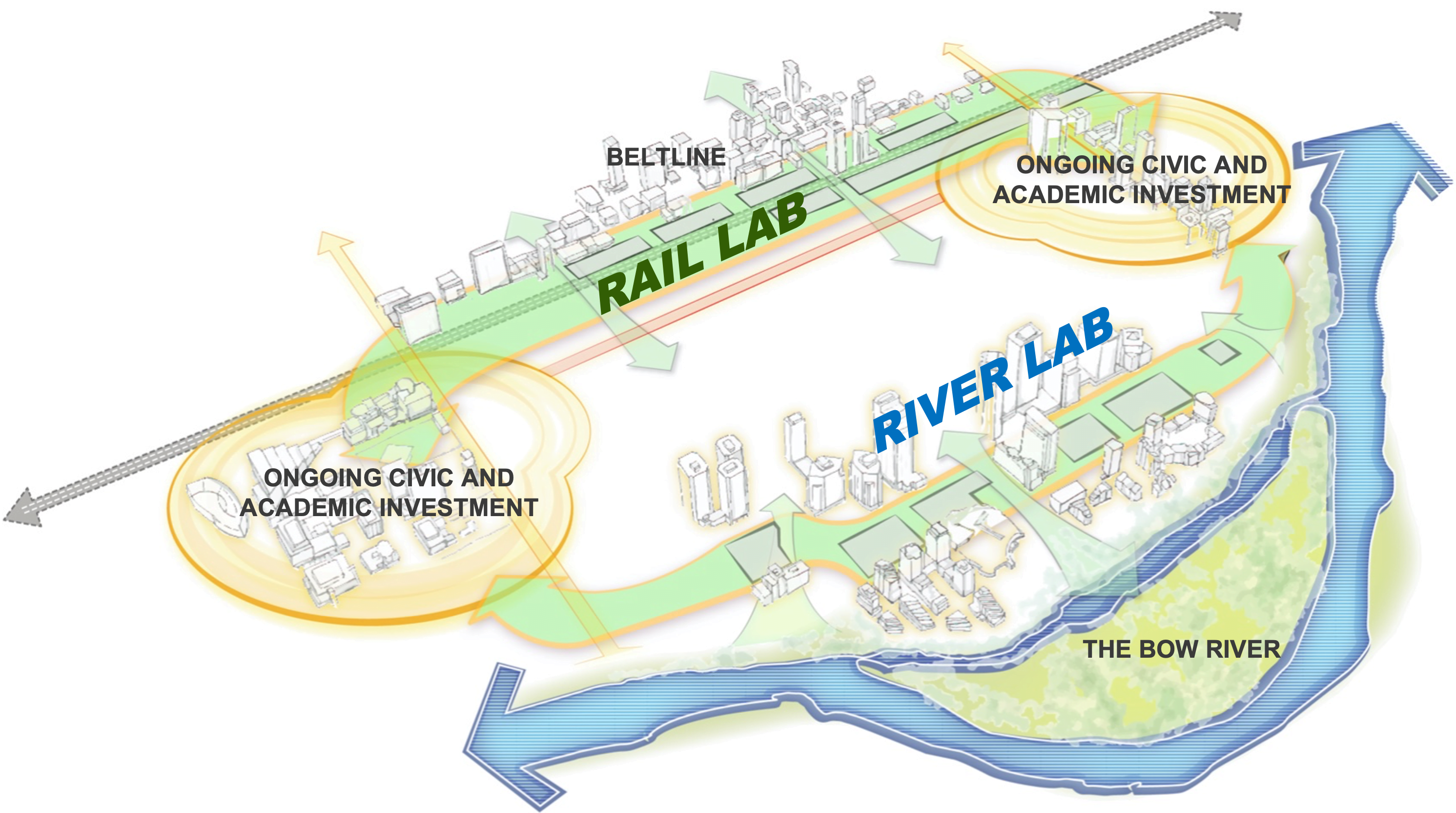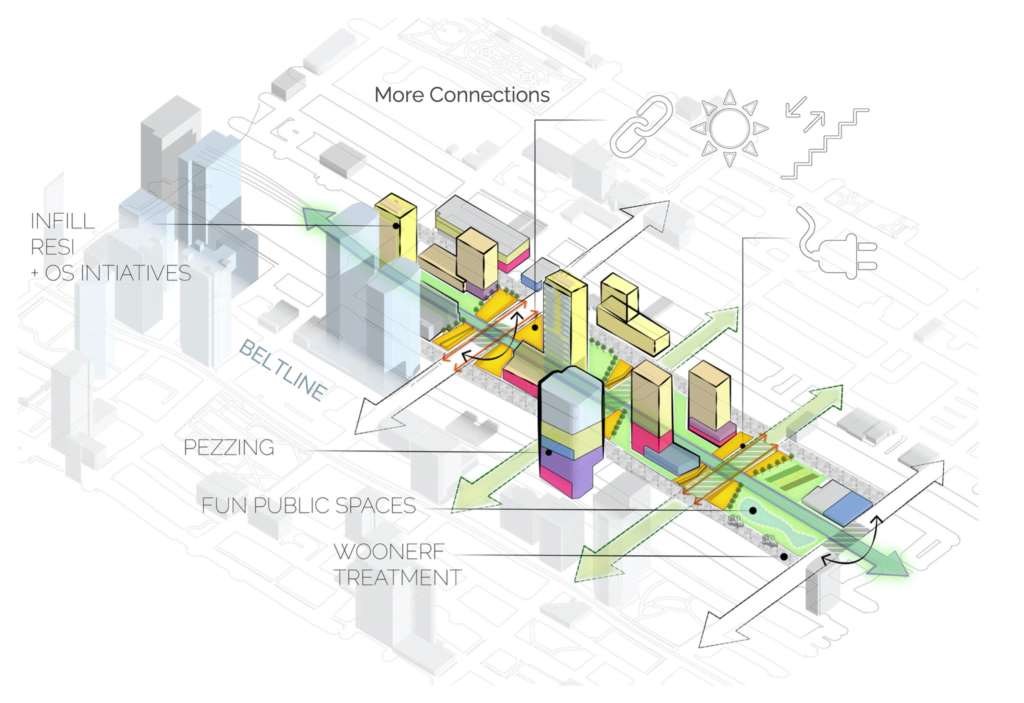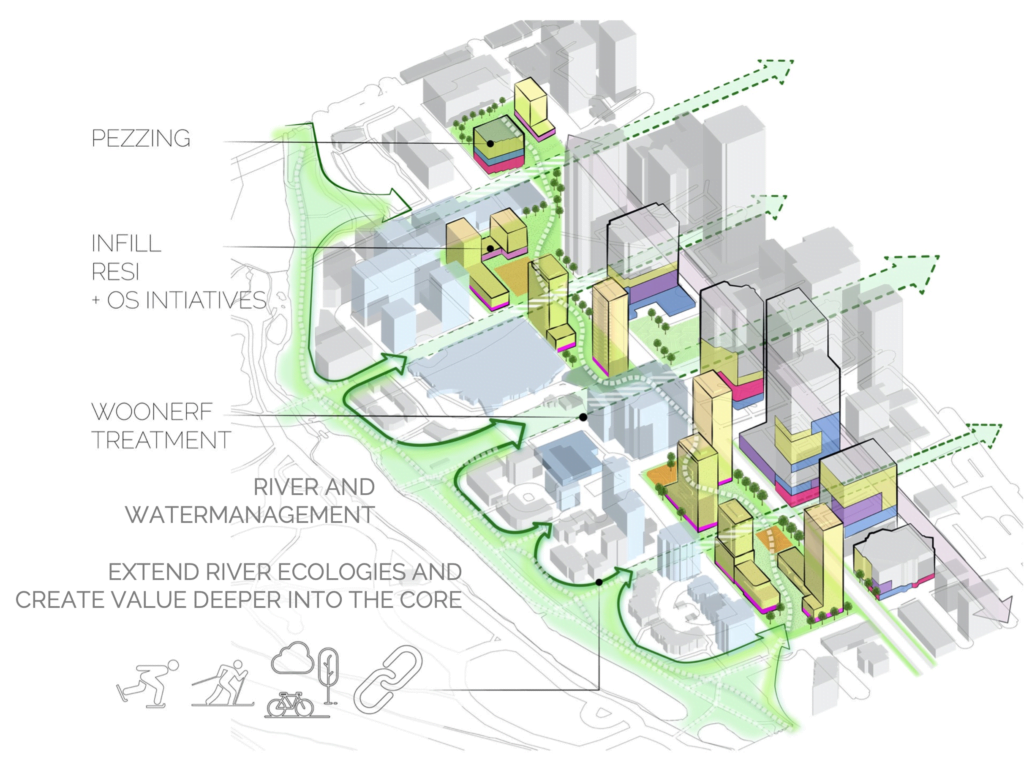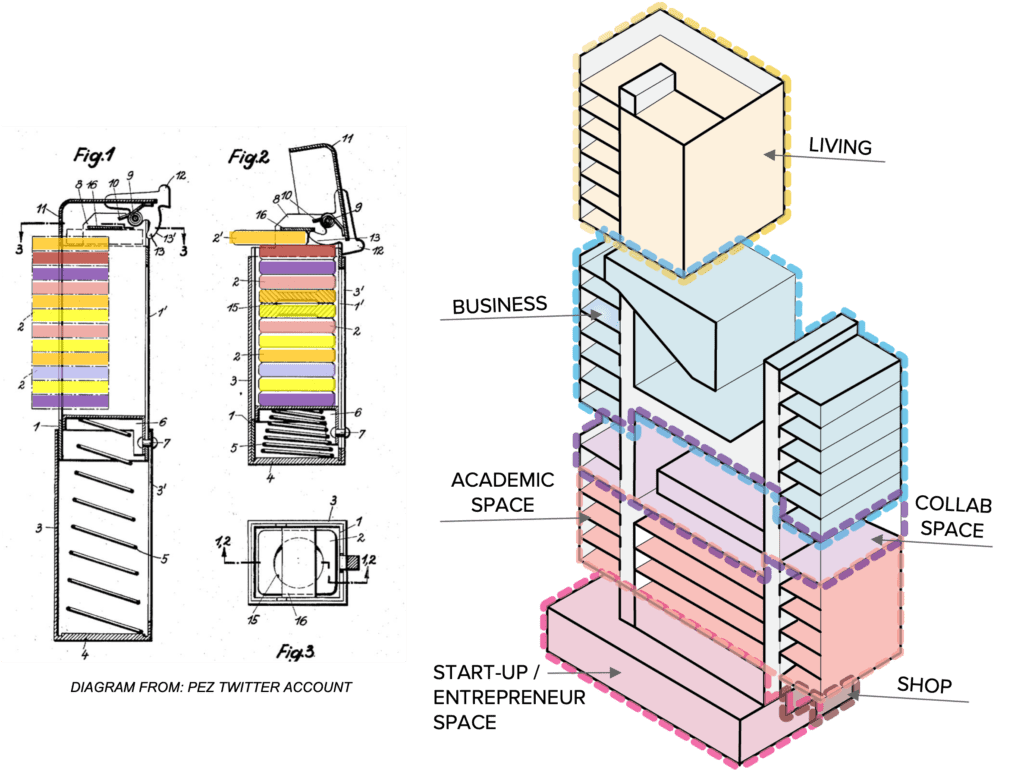In 2021 The Globe and Mail approached Urban Strategies + Intelligent Futures with a charrette challenge:
“What to do about the future of downtown Calgary? Given its high office vacancies and the current lack of clear economic drivers, we’re open to anything.”
Our team viewed the challenge of emptiness in the downtown core — high office vacancies and an oversupply of surface parking – as an incredible opportunity to expand upon success stories that currently ring the downtown. Calgary should continue to build upon what is working and draw more economic and cultural diversity into the centre.
We suggested creating two urban labs located near successful areas. RIVER LAB, is based on the Bow River as a powerful asset, with beautiful parks and river ecologies, to create civic change. State-of-the-art, sustainable, city-river neighbourhoods, new post-secondary institutions and public realm destinations could be oriented and rooted to the river’s ecosystem. RAIL LAB, would expand commerce and housing around the Beltline while improving connections south across the rail corridor. High-quality public places where diverse interests can intermingle and build on Beltline success and can spark new social, cultural and economic drivers for the downtown. The LAB areas are big enough to accelerate transformation for the downtown.
Both labs utilize the following ideas to build change:
- Pez City: convert empty office buildings into radically diverse, mixed-use buildings that create vertical ‘collision’ communities and new innovation economies.
- Transform massive parking lots: convert asphalt into neighbourhoods centred on high-quality public space, provide downtown housing to drastically increase population, and provide flexible space for entrepreneurship in the core.
- Make better connections: create beautiful urban experiences that link and expand successful neighbourhoods and remove barriers.
Some of these ideas were conveyed in the following Globe and Mail article:
Can architecture fix a downtown? Design experts share their vision for a reimagined Calgary
Create two civic labs to spark urban renewal:
River Lab & Rail Lab
Actions:
- Pez City: convert empty office buildings into radically diverse, mixed-use buildings that create vertical ‘collision’ communities and new innovation economies.
- Transform massive parking lots: convert asphalt into neighbourhoods centred on high-quality public space, provide downtown housing to drastically increase population, and provide flexible space for entrepreneurship in the core.
- Make better connections: create beautiful urban experiences that link and expand successful neighbourhoods and remove barriers.

Rail Lab
- Expand the success of the Beltline into the Rail Lab and downtown core.
- Create more links between the core and the beltline — daylighting underpasses and bridging communities.
- Intensify parking lots and create new public spaces that help traverse the rail corridor.
- Create high value destination places that attract investment, visitors, workers, students, and residents.
- Convert empty office buildings into vertically eclectic, hyper mixed-use buildings – “Pez City ”
- Infill with new residential buildings providing a critical increase to population.

River Lab
- Redefine what it means to be ”on the river”. Capitalize on the beauty and vitality of the Bow River while protecting for flooding.
- Create unique public realms based on integrating urban and natural ecologies – transform endless parking lots.
- Create high value destination places that invite investment and attract visitors, workers, students, and residents.
- Convert empty office spaces into hyper-vertical mixed use buildings – something we call Pez City.
- Infill with new residential buildings providing a critical increase of population.

“Pez City”
- Build upon successful incentives to convert empty office building spaces.
- Expand and experiment with greater vertical mix and diversity.
- Encourage vertical entrepreneurial communities that braid food, culture, commerce, residential, incubator and institutional space.
